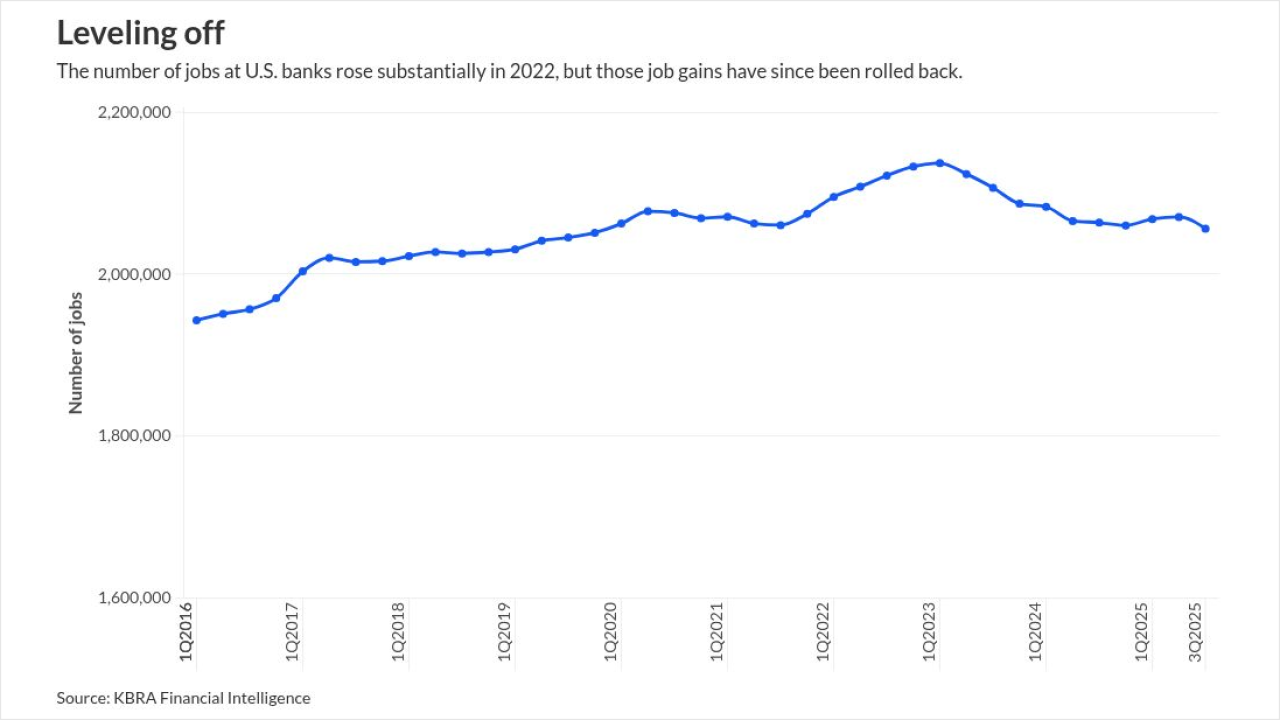- Key insight: Fintechs are threatening bank share of B2B commercial cards.
- What's at stake: A market that totals more than $4 trillion.
- Forward look: Travel and fleet cards are an emerging opportunity.
The commercial card space has plenty of growth potential, but fintech rivals are getting the jump on banks in tapping this more than $4 trillion market.
That's according to Brian Muse-McKenney, chief revenue officer at Episode Six, which offers payment processing and ledger infrastructure. He contends that the B2B market holds a massive opportunity for banks—if only they'd step up to the plate. Instead, they are losing their lunch to fintech competitors like Brex and Ramp.
"Without a thoughtful response, banks will continue to bleed market share," Muse-McKenney, a former HSBC executive, told American Banker.
Datos Insights
Today, commercial cards only account for a small sliver of B2B spending in North America, according to Hugh Thomas, commercial and enterprise payments lead at Javelin Strategy & Research. ACH is far more popular for reasons that include cost, Thomas told American Banker. Still, there are opportunities for banks to drive spending to commercial cards, he added.
Antiquated technology
Banks are struggling to make headway with commercial cards for several reasons, according to Muse-McKenney. For starters, they're sitting on antiquated technology that's clunky and can't compete with fintech upstarts such as Brex and Ramp, whose services Episode Six uses. "Their technology is built for today's world. It's real-time, it's embedded and it's hyper-personalized," Muse-McKenney said.
Many business customers appreciate the ability to seamlessly integrate their card operations into their enterprise resource planning system, versus having to call a supplier and pay over the phone, he said. But banks haven't done a stellar job of integration, which is an area where some fintechs shine.
Brex, for instance,
Ramp, meanwhile, now boasts more than 45,000 customers, according to its website. Over the summer, the company closed a $200 million funding round and continues to focus on AI-powered features. It launched nearly 300 of these features in the first half of 2025.
By layering modern, API-first capabilities alongside legacy infrastructure, banks can launch new products in months, preserve stability and immediately generate fee income, Muse-McKenney told American Banker. Relying only on their legacy systems, banks "can't deliver flexible, tailored card products at speed, leaving the door open for agile fintech challengers," he added.
Fleet cards, a model to emulate
One opportunity for banks to grab market share could be within the fleet card industry. Traditionally, fleet cards were only usable for fuel, but that's opened up. Visa's Fleet 2.0 program, for instance, allows for skew-level itemization, so employees can pay with the same card for gas as they can for other related spending. This ability broadens the spend capture that's possible through these cards, Muse-McKenney, but banks haven't widely marketed the option. "It requires change. A bank running on old technology for their commercial cards" takes 12 to 18 months just to put a product feature out, never mind a whole new category," he told American Banker.
Motive, a driver safety and fleet management start-up, is an example of a fintech company that combines fleet management and spend management. The card can be used anywhere Mastercard is accepted, for any type of approved purchase. The platform includes real-time spend and savings reports by driver and vehicle and offers visibility into wasteful spending habits so companies can coach drivers on more cost-effective practices. These are the types of offerings that banks could focus on to drive market share, according to Muse-McKenney.
Virtual cards
Banks have started to enable virtual cards, which is a step in the right direction, but there's still a lot of growth opportunity, Muse-McKenney said. "That's the gap that a lot of banks are realizing they have today."
This is a cost savings because companies don't have to pay for plastic. Plus, virtual cards offer businesses the ability to create individualized spending controls and limit where the card can be used. They also offer other customizable options.
Some suppliers resist using cards due to interchange costs, but flexible pricing and effective marketing can help overcome these challenges, according to industry participants.
Pricing matters
If banks want to increase their presence in the commercial card market, pricing needs to get more customized rather than one-size-fits-all, said Javelin's Thomas. Banks need to know what they are pricing against. With creative pricing, banks can beat the price of ACH and real-time payments for B2B. "The whole notion here is to value," he told American Banker.






